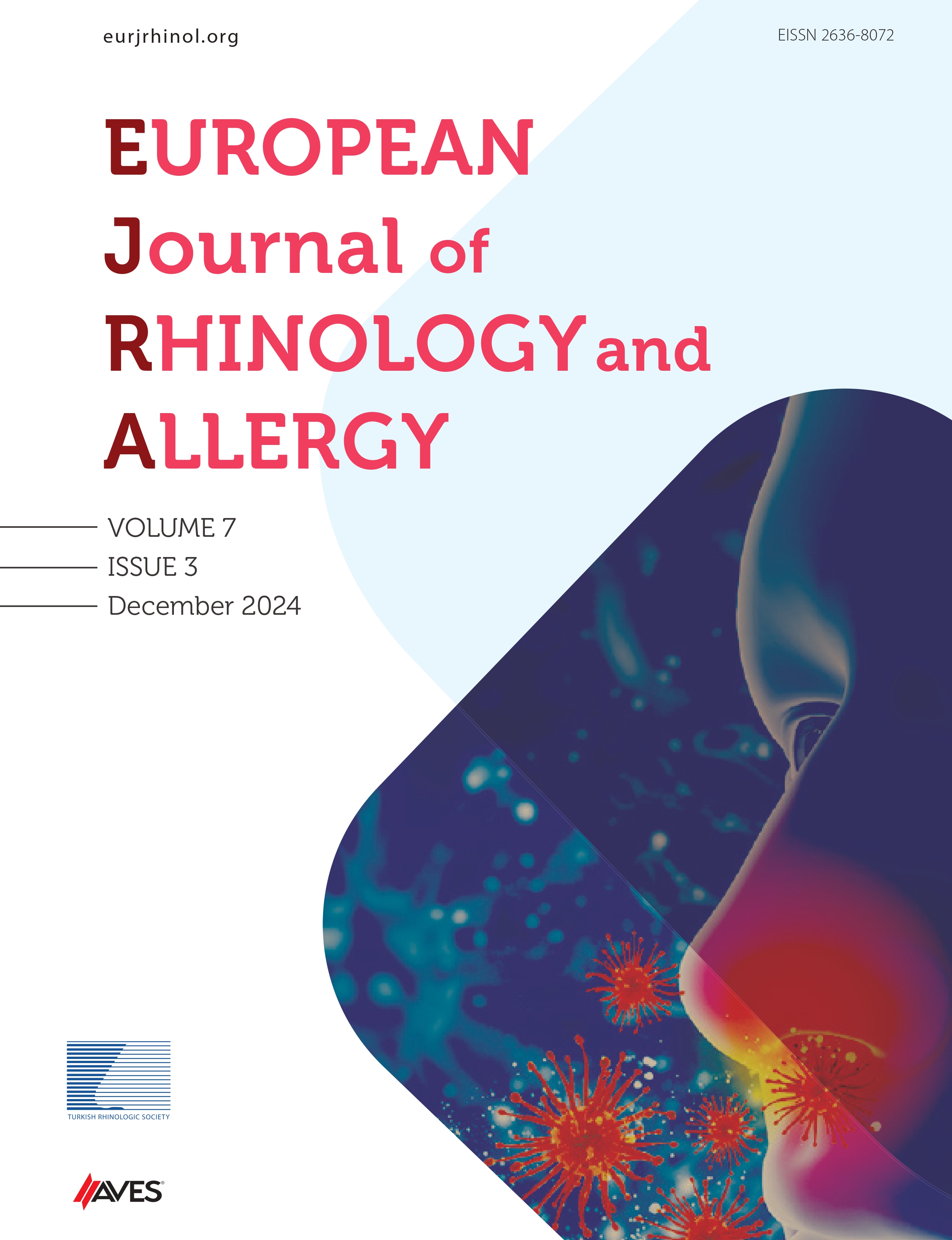Objective: Although inferior turbinate variations are asymptomatic in most cases, symptoms may occur due to inferior turbinate hypertrophy or nasal cavity obstruction. They may even play a role in rhinogenic headache or allergic fungal sinusitis. This study, which has been studied very little and is not found much in the literature, was carried out to investigate and clinically evaluate inferior turbinate variations,
Methods: This study was conducted with a total of 376 patients, 176 women (44.8%) and 200 men (50.9%), with a mean age of 36.73 ± 11.62 years, who underwent paranasal sinus computed tomography. Inferior turbinate variations were evaluated in the sections.
Results: It was determined that 4.5% (n=17) of the patients had inferior turbinate variation and 95.5% (n=359) had no variation. Anatomical variations of inferior turbinate on paranasal sinus computed tomography scan of the 376 patients were examined: serrated 10 (2.5%), bullous 3 (0.8%), paradoxical 1 (0.3%), accessory bifid 2 (0.5%), and hypoplasia 1 (0.3%).
Conclusions: In this study, it was determined that inferior turbinate variations were more prevalent than expected, and accessory bifid, serrated, and paradoxical subgroups, which have been reported to be very rare in the literature, were more commonly seen than expected.
Cite this article as: Tuğtağ Demir B, Sarı N, Çankal F. Inferior turbinate variations: A radioanatomic study. Eur J Rhinol Allergy 2022;5(3):84-88.

.png)

.png)